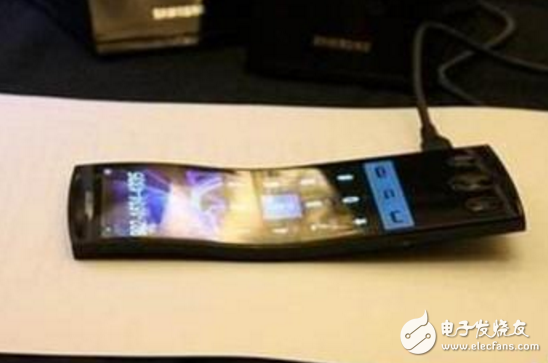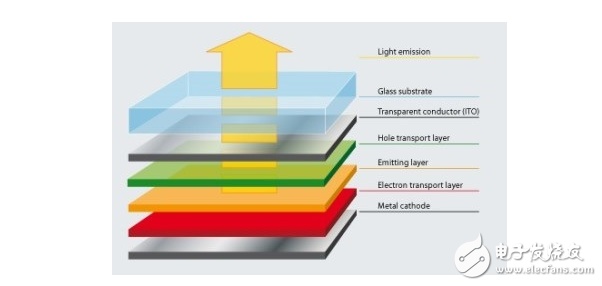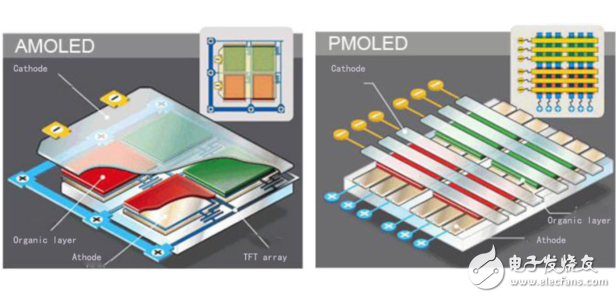JDI is Japan Display, a Japanese vision company, which is jointly operated by Sony, Toshiba and Hitachi. The jdi screen refers to the screen produced by the company. The above is my reference to other information that I know. In short, jdi is a joint venture of several giants. In short, jdi has a high line and a bottom line. The performance is good. The disadvantage is that there are some differences in previous generations, such as chromatic aberration, and yellowish. It's all right now, sony z3 is jdi, the resolution is very high.
AMOLED is the abbreviation of English AcTIve-matrix organic light emitTIng diode. The full name of Chinese is active matrix organic light emitting diode or active matrix organic light emitting diode. It is called the next generation display technology. The AMOLED screen is constructed in three layers, an AMOLED screen, a TouchScreenPanel (touch screen panel), and an outer protective glass. Samsung Electronics, Samsung SDI, LG, and Philips all value this new display technology.

There is absolutely no one who is good and who is bad. The two screens are the difference between turnip green vegetables.
AMOLED is a screen material produced by Samsung in South Korea. JDI is the name of a screen manufacturer located in Japan.
In general, AMOLED screens are brightly colored, have high contrast, short response time, low power consumption, and pure black. The disadvantages are short life, low brightness, low screen detail, and high screen replacement cost.
JDI's screen, color reproduction is real, high brightness, soft perception, high degree of detail, long life; the disadvantage is that the power consumption is large, the contrast is low, the screen is easy to leak light, twill.
So obviously, you can't say which screen is better, because each has its own advantages.
If you think that the screen is bright, it is a good screen, then amoled is good.
If you think the color is real, it is good for JDI.
If you think that the screen is expensive, it is good to be amled.
If you think that the screen is used for a long time, it is good for JDI.

AMOLED
AMOLED is actually the abbreviation of AcTIve Matrix Organic Light EmitTIng Diode, the core is still in Light Emitting Diode, which is LED. Although LEDs are more common in everyday life, in the screen, each LED is very small in size and is divided into three sub-pixel groups of red, green and blue, and then different colors are formed, and the sub-pixels are arranged. The way will also affect the entire display.
The O in AMOLED stands for Organic, which is "organic". Simply put, a series of organic thin film materials are used between the positive and negative electrodes to achieve the purpose of illuminating.

Finally, AM stands for Active Matrix, which is relative to the Passive Matrix and refers to the way each OLED pixel is driven. In the Passive Matrix, the control of each pixel is realized by a complex electrode network to achieve charge and discharge of a certain pixel. In general, the Passive Matrix is ​​controlled at a relatively slow speed and has a slightly lower control precision. Unlike the Passive Matrix, the Active Matrix has a TFT and capacitor layer on each LED so that when a row is energized to activate the intersecting pixel, the capacitor layer in the pixel can be refreshed between refreshes. Maintain a state of charge for faster and more accurate pixel illumination control.

The Super AMOLED claimed by Samsung is essentially the same as AMOLED. It only implements the touch layer in the display layer, so there is no need to add an additional touch layer, which can reduce the thickness of the entire screen module.
The main advantage of OLED screens is the high degree of controllability of the pixels, each pixel can be independently switched to achieve purer black and higher contrast. In addition, turning off unnecessary pixels while displaying a picture can also reduce power consumption. At the same time, since the number of layers inside the screen module is small, the light transmittance is also better, which is advantageous for achieving higher brightness and a wider viewing angle.
Compared with LCD, OLED screen can be made very thin, which is very suitable for mobile devices such as mobile phones. In addition, due to the lack of a hard backlight layer and the maturity of flexible plastic substrates, OLEDs also have great advantages on flexible screens, creating more possibilities for future mobile devices and even wearable devices.
JDI
JDI's FULL ACTIVETM FLEX has exposed various parameters to see that this is a relatively mediocre panel. Of course, this may be a conservative choice for pre-production trials, and as a benchmark to challenge the current popular VR, high-resolution display. Effect application, it is not dominant. In the process of OLED pressure liquid crystal display, wide color gamut and rich color are the key to the final harvest of users, and FULL ACTIVETM FLEX is still a display technology based on liquid crystal, and it is difficult to gain the upper hand.
Secondly, at the time node, FULL ACTIVETM FLEX is expected to be available in 2018, when OLED technology will mature at the same time. Sharp, BOE, LGD and other manufacturers are not going to switch to FULL ACTIVETM FLEX camp after spending huge sums of money on OLEDs. The possibility, if you want to turn around, JDI's industry dilemma will be more severe than Samsung's insistence on AMOLED.

At the customer level, JDI claims that Apple, Huawei and other brands have expressed support for FULL ACTIVETM FLEX, and this statement is based on the high expectations of FULL ACTIVETM FLEX technology, or because the supply of Samsung AMOLED panels is not guaranteed. What do you want to do with your own hands?

Finally, from the perspective of plastic substrate application, the maturity of JDI FULL ACTIVETM FLEX technology does not look higher than Samsung AMOLED. This technology can achieve flexible border display like Galaxy S6, and Samsung's latest application. In the design patent, the flexible screen has been able to perform difficult actions such as folding and curling.
In order to reinvigorate investors' confidence and express their competitiveness in the field of cutting-edge display technology, JDI is indeed working very hard, but the product forms we see are mostly “micro-innovationâ€, but lack of guidance for real trends, of course limited. In terms of capital size and competitive pressure, JDI's choice is somewhat helpless, but Japan still has material suppliers and equipment vendors in the OLED market. If JDI can cooperate with these domestic companies, it will be launched in the OLED market. It is not impossible at all. Perhaps the main problem that needs customer service is the operational concept of Japanese companies.
Ps5 Dual Dock Station,Charging Station For Ps,Controller Dual Dock For Ps5,Ps5 Storage Tower Stand Holder
Shenzhen GEME electronics Co,.Ltd , https://www.gemesz.com